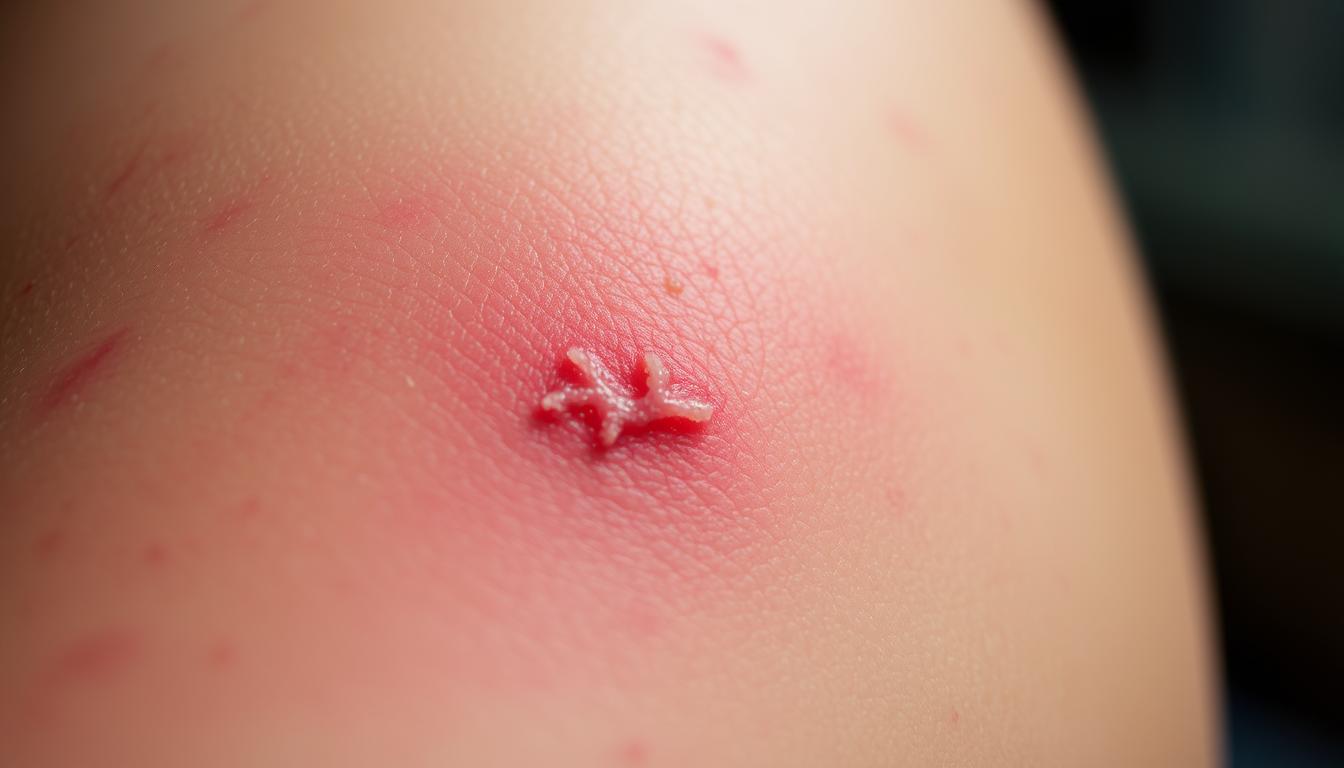
Getting a new tattoo is an exciting experience, but understanding the healing process is crucial for ensuring your ink looks its best long-term. Many first-time tattoo recipients are surprised or concerned when they notice scabbing on their new tattoo.
Scabbing is a natural and necessary part of how your body heals after getting tattooed. As your skin undergoes the healing process, it’s normal for it to go through various stages, including scabs formation. Proper aftercare is essential to prevent complications and promote healthy healing. For more information on the complete healing timeline, you can visit this resource.
Key Takeaways
- Scabbing is a normal part of the healing process after getting a tattoo.
- Proper aftercare is crucial to prevent scarring and color loss.
- The healing process involves multiple stages, including inflammation and remodeling.
- Consistent aftercare can prevent up to 80% of healing issues.
- It’s normal for a tattoo to itch and flake during the healing process.
Understanding the Tattoo Healing Process
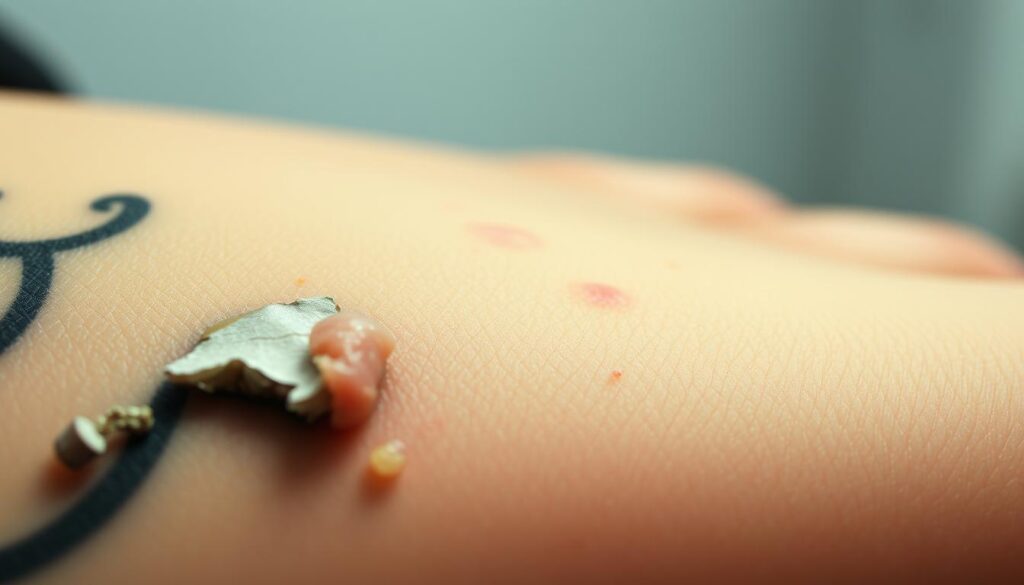
The journey to a perfectly healed tattoo begins with understanding the tattoo healing process. When you get a tattoo, your skin undergoes a series of changes as it heals. This process is crucial for the proper healing of your tattoo and the overall health of your skin.
Why Your Skin Forms Scabs After Tattooing
After getting a tattoo, your skin forms scabs as part of the natural healing process. This scabbing is a protective mechanism that helps shield the tattooed area from external damage and infection. The scabs may look unsightly, but they play a vital role in ensuring your tattoo heals properly.
Timeline of Tattoo Healing
The tattoo healing process can be broken down into several stages:
- Days 1-3: Your tattoo will be red, swollen, and may ooze plasma and excess ink. This is a normal part of the initial inflammatory response.
- Days 4-6: Scabbing begins to form as the plasma dries, creating a protective layer over your tattoo.
- Days 7-14: The scabbing phase is in full effect; your tattoo may look dull, and the scabs will begin to naturally flake or peel away.
- Days 14-30: Most scabs should have naturally fallen off, revealing fresh, healed skin underneath.
For more information on managing the itching that can occur during the healing process, you can visit https://nailcutandink.com/why-is-my-tattoo-itchy/.
| Days | Healing Stage | Description |
|---|---|---|
| 1-3 | Inflammatory Response | Redness, swelling, and oozing |
| 4-6 | Scabbing | Formation of scabs |
| 7-14 | Scabbing Phase | Scabs flake or peel away |
| 14-30 | Healed Skin | Scabs fall off, revealing healed skin |
What is Normal Tattoo Scabbing?
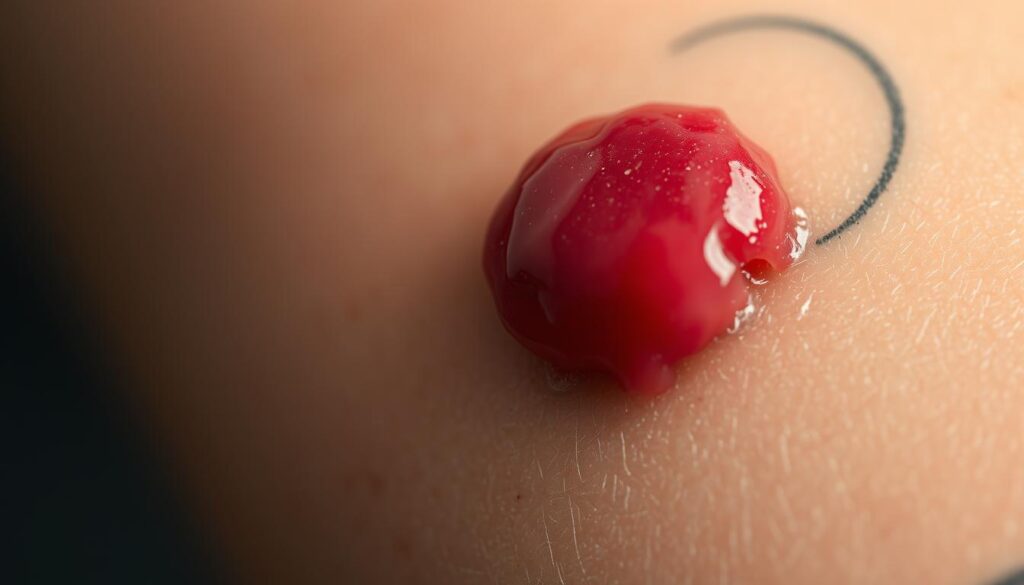
Scabbing is a natural part of the tattoo healing process, but its severity can vary based on several factors. As part of the body’s natural response to injury, scabbing protects the tattooed area from external damage and infection.
How Scabs Should Look and Feel
A scab on a tattoo typically appears as a dry, crusty layer over the ink. It may feel rough to the touch and can be accompanied by redness and swelling. A normal scab should not be overly thick or painful. “A well-healing tattoo scab should be dry and not oozing any fluid,” says a professional tattoo artist. If you notice any unusual symptoms, it’s crucial to consult your tattoo artist or a healthcare professional.
Factors That Influence Scabbing Severity
Several factors can influence the severity of scabbing on your tattoo, including:
- The skill and technique of your tattoo artist can significantly impact scabbing. Heavy-handed artists may cause more severe scabbing.
- The area where the tattoo is placed also matters, with areas having thin skin or frequent movement tend to scab more.
- The style and depth of your tattoo affect scabbing severity, with color-saturated pieces typically scabbing more than fine line work.
- Your individual healing factors, such as skin type and overall health, play a significant role in scabbing.
- Aftercare practices directly influence scabbing, with proper moisturizing reducing severity.
By understanding these factors and taking proper care of your tattoo, you can minimize the risk of severe scabbing and ensure a smooth healing process.
Warning Signs: When Tattoo Scabbing Isn’t Normal
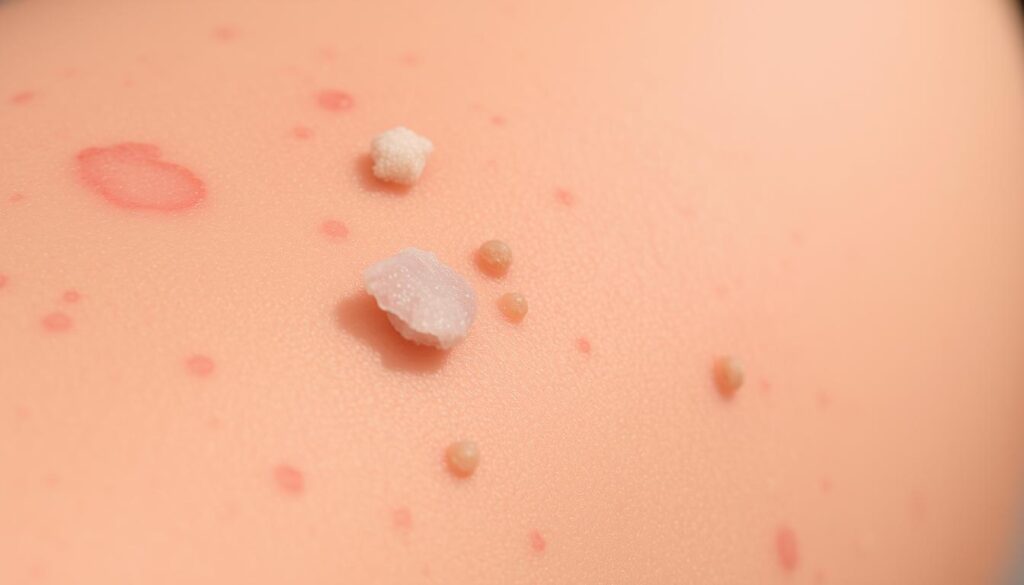
As your tattoo heals, it’s essential to monitor the scabbing process for any signs that something is amiss. While some level of scabbing is normal, there are instances where it can indicate a problem with the healing process.
Signs of Infection to Watch For
It’s crucial to be aware of the signs of infection, which can include increasing pain, spreading redness, fever, or pus-filled areas around the tattoo. If you notice any of these symptoms, it’s vital to take action promptly. For more information on the tattoo healing process, you can visit this resource to understand what to expect and when to seek help.
When to Contact Your Artist or a Doctor
If you’re concerned about your tattoo’s healing progress, it’s always best to consult your tattoo artist first. They can provide guidance on whether your tattoo is healing properly or if there are issues that need medical attention. For minor concerns, such as excessive dryness, your artist can offer advice. However, if you notice signs infection like severe redness or swelling, you should seek medical attention immediately. In cases of doubt, it’s always better to err on the side of caution to prevent any potential infection from becoming serious.
Proper Tattoo Scabbing Aftercare
Ensuring your new tattoo heals correctly requires careful aftercare and attention to detail. Proper care during the healing process can make a significant difference in the final appearance of your tattoo.
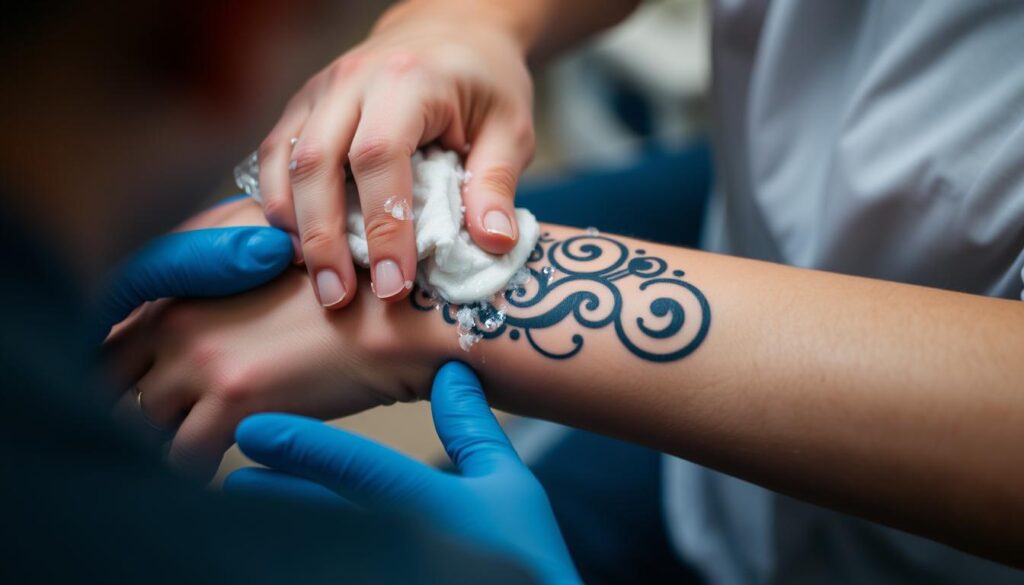
Cleaning Your Scabbing Tattoo
Cleaning your tattoo regularly is vital for preventing infection and promoting healing. Gently wash your tattoo with mild soap and lukewarm water, then pat it dry with a clean towel. Avoid submerging your tattoo in water, such as taking a bath or swimming, until it’s fully healed.
Moisturizing Techniques
Moisturizing your tattoo is crucial for keeping the skin hydrated and promoting the healing process. Apply a fragrance-free lotion or aftercare cream recommended by your tattoo artist. Avoid over-moisturizing, as this can lead to clogged pores and irritation.
Protecting Your Healing Tattoo
To protect your healing tattoo, wear loose-fitting, breathable clothing to prevent friction and irritation. Keep your tattoo out of direct sunlight, and avoid activities that cause excessive sweating until the scabs have naturally fallen off. Once healed, use SPF30+ sunscreen to protect your tattoo from UV damage.
- Wear loose-fitting, breathable clothing over your healing tattoo.
- Keep your tattoo out of direct sunlight during the healing process.
- Avoid activities that cause excessive sweating.
- Sleep positions matter; avoid putting pressure on your healing tattoo.
- Use SPF30+ sunscreen on your tattoo once it’s fully healed and exposed to the sun.
Managing the Dreaded Tattoo Itch
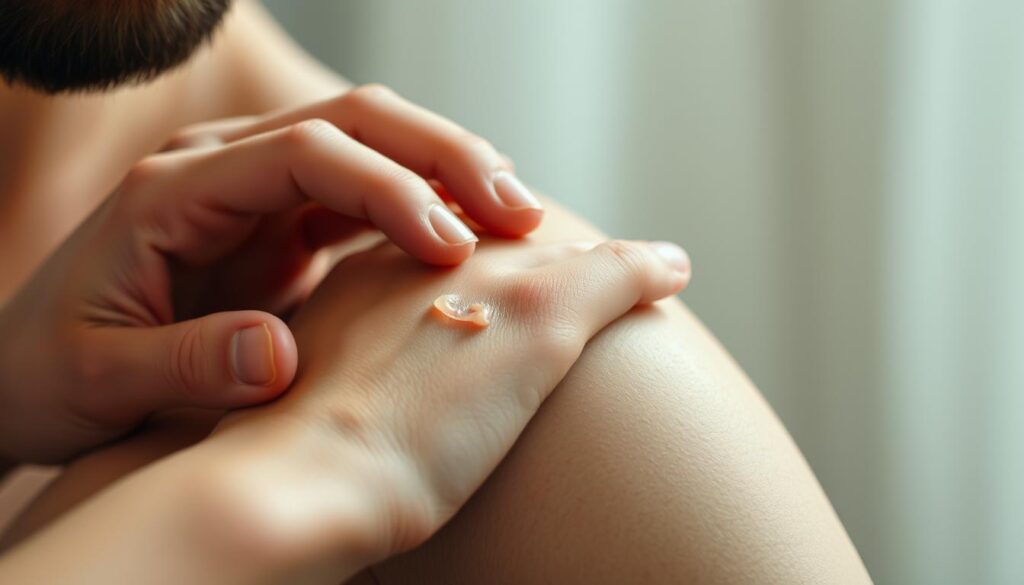
Dealing with tattoo itch can be challenging, but understanding its causes and remedies can help. As your new ink heals, it’s normal to experience some level of itching due to the skin’s natural healing process.
The Itch Behind Scabbing Tattoos
The itching sensation associated with tattoo scabs is primarily due to the healing skin. As the skin regenerates, it can feel itchy, but it’s crucial to avoid scratching or picking at the scabs to prevent damage to the tattoo and potential infection.
Safe Ways to Relieve Itching
To alleviate itching, several methods can be employed. Applying a thin layer of tattoo-specific moisturizer can provide immediate relief by hydrating the skin. For intense itching, gently patting the area with clean hands or applying slight pressure can help. Cold compresses, made by wrapping an ice pack in a clean cloth and holding it near the tattoo, can also reduce itching. Additionally, using tattoo-safe, anti-itch products or practicing distraction techniques like light exercise or meditation can be beneficial.
| Method | Description | Benefits |
|---|---|---|
| Tattoo-specific moisturizer | Apply a thin layer to hydrate the skin | Immediate relief, promotes healing |
| Gentle patting or pressure | Use clean hands to pat or apply pressure | Reduces intense itching |
| Cold compresses | Wrap an ice pack in cloth and hold near tattoo | Reduces itching, soothing |
For more information on tattoo safety and aftercare, you can visit this resource to learn more about maintaining healthy skin with ink.
The Do’s and Don’ts of Tattoo Scabbing

To ensure your tattoo heals properly, it’s essential to know what to do and what to avoid during the scabbing phase. Proper aftercare can make a significant difference in the final outcome of your tattoo.
Essential Practices for Healthy Healing
During the healing process, it’s crucial to keep your tattoo clean and moisturized. Using a mild soap for cleaning can help prevent infection. Gently pat your tattoo dry after washing, and apply a moisturizer to keep the skin hydrated. Avoid exposing your tattoo to direct sunlight, as it can cause fading and irritation.
Common Mistakes to Avoid
One of the most significant mistakes you can make during the tattoo healing process is to pick or scratch at the scabs. This can lead to scarring, infection, and ink loss. Additionally, avoid soaking your tattoo in water, such as taking a bath or swimming, until it’s fully healed. Don’t overwash or oversaturate your tattoo with moisturizer, as this can interfere with the natural healing process.
| Do’s | Don’ts |
|---|---|
| Keep your tattoo clean and moisturized | Pick or scratch at scabs |
| Gently pat dry after washing | Soak your tattoo in water |
| Avoid direct sunlight | Overwash or oversaturate with moisturizer |
Conclusion: Patience Leads to Beautiful Results
Healing a new tattoo is a process that demands attention to detail and patience. Understanding that the tattoo healing process, including scabbing, is temporary can make it easier to endure. Typically lasting just a few weeks, the results of proper aftercare will be visible for the lifetime of your tattoo.
To ensure your tattoo heals beautifully, it’s crucial to resist the urge to pick or scratch scabs, as this can lead to complications. Every person’s healing process is unique, influenced by factors like placement, size, and individual healing characteristics. By following the guidelines outlined in this article and consulting your tattoo artist when needed, you’re giving your new ink the best chance to heal with vibrant color and crisp lines.
